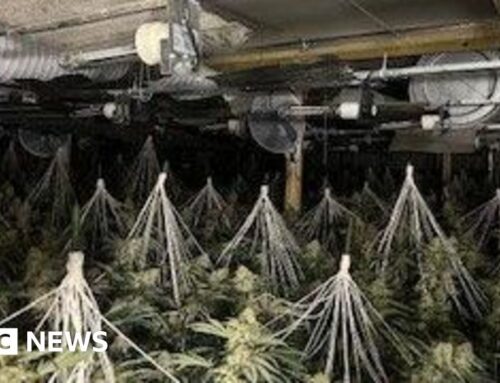Russian war on the environment: the Danube delta, Romania and Ukraine
May 23, 2025

A channel in Vylkove, Ukraine. Photo: Shutterstock
Arriving from Odesa, Tetiana Balatska could not resist the charm of Vylkove, one of the “gates” to the Danube delta and a town of 5,000 inhabitants that looks like the end of the world. Opposite, on the other side of the river, Romania and its trees emerge, inaccessible. Further east, the marshes rise towards the Black Sea. Only a renovated road, now divided up by military checkpoints, allows access in two hours from the river port of Izmail.
This “haven of peace and nature” for Tetiana is also nicknamed the “Venice of the Danube”, with its 46 kilometres of canals that connect the houses to each other. She has been working there for 24 years as a biologist at the Danube Delta Biosphere Reserve, which covers 5,200 square kilometres between Ukraine and Romania.
But since the Russian invasion of Ukraine on February 24th 2022, the fishing village has become a military base, a rear post of Snake Island, which was attacked in the first days by the Russian army and then retaken by the Ukrainians a few weeks later. The sounds of the clashes, a few dozen kilometres away, made Vylkove tremble.
“All the fishermen’s huts were destroyed”
“The coastline was bombed. All the fishermen’s huts were destroyed,” says Tetiana, who can only see the damage from satellite images, because “the area has been militarized. A large part of the delta on the Ukrainian side is inaccessible. It is impossible to assess the consequences of the war on the fauna and flora.”
The energetic sixty-year-old does not let herself be defeated. In particular, she continues her work of environmental education with young people. This summer, she organized a camp on the Romanian side, with children from Vylkove, Moldova and Romania. This was done through a partnership with Rewilding Ukraine, a branch of Rewilding Europe, a Dutch NGO that has been carrying out “rewilding” projects for several years in the delta.
One of their joint projects is located on the island of Ermakov, a 2,300-hectare piece of land with swamps in the centre of the river. About fifty water buffaloes have been introduced there since 2019, as well as wild horses and roe deer.
Here, too, war threatens such seeming calm. Since the summer of 2023, Russian drones have targeted Ukrainian ports on the Danube, including Vylkove on a few occasions.
“It was next to the island. The animals are probably stressed by the explosions,” says Tetiana.
To get to Ermakov, you have to take a small boat from the village. In this martial context, the island is only accessible to the military, unless special permission is granted. There, about twenty water buffaloes throw themselves into the cool water or stay grouped near the shore near their young.
“They recreate a mosaic of ecosystems in these wetlands”
“They adapt well to this type of environment,” says Mykhailo Nesterenko, project manager of Rewilding Ukraine, who left Odesa for the Netherlands at the beginning of the full-scale war.
“Thanks to grazing, they open clearings, conducive to the habitats of birds and other small animals,” he explains. “They recreate a mosaic of ecosystems in these wetlands.”
The biologist has been able to see the difference in a few years.
“A neighbouring island does not benefit from this reintroduction of species,” he continues. “It does not have as much biodiversity as Ermakov.”
In the delta, Rewilding Ukraine has another major project: the reconnection of lakes with the river near Izmail. This is being done “in order to regain the natural flow of water. This allows the lakes to breathe and the fish to migrate”, says Mykhailo. These basins were closed during the Soviet period for crop irrigation, causing a deterioration in water quality.
Here again, the war brought its share of challenges.
“It was difficult to find men to dig the canals, many had left or enlisted,” the man continues.
In front of one of these lakes, where a canal connects it to the Danube, children swim while adults cast their hooks before night falls.
“It’s important for the local communities,” Mykhailo emphasizes, “They are asking for nature conservation projects, because it is something positive, as opposed to destruction.”
About a hundred kilometres away, between the Danube delta and Crimea, clashes do not stop on the Black Sea. The Ukrainian army has destroyed nearly 30 Russian warships, whose wrecks and fuel can become sources of pollution.
Wrecks and oil slicks
In September 2023, Ukraine also recovered the “Boyko Towers”, offshore oil platforms occupied since 2015 by Russia. The fighting caused fires on the platforms as early as June 2022, which lasted nearly a year according to environmentalists. Large oil slicks have been observed on the surface of the water.
According to the Ukrainian Ministry of Environmental Protection and Natural Resources, the war has caused losses of nearly seven billion US dollars in the Black Sea region. This was partly caused by the destruction of the Kakhovka Dam on June 6th 2023, which has been blamed on Russia. This has caused an environmental disaster on the banks of the Dnieper river but also at sea.
The sudden drop in water salinity, due to the arrival of freshwater masses in a short time, coupled with the increase in pollution, has led to the proliferation of cyanobacteria, which have deprived marine species of oxygen.
Nearly 70 per cent of the mussels died
In particular, they “caused the death of nearly 70 per cent of the mussels on the coast of Odesa and severely affected other species,” laments Olena Marushevska, a scientist for the Ukrainian National Hub of the European Commission’s Black Sea Assistance Mechanism (BSAM). A year later, the biologist is concerned about the presence of heavy metals that could permanently contaminate the coastline.
In December 2023, Ukraine started an investigation to prosecute Russia for “ecocide” before the International Criminal Court. For scientists, the great difficulty is being able to properly assess and measure the damage. They currently have no access to the Black Sea or a large part of the coastline, which is militarized and riddled with mines.
It is also impossible to analyse the damage and sources of pollution in occupied territories such as the Kherson region and Crimea. They then try to observe the traces of pollution through satellite images. For Olena Marushevska, “this is not enough.”
In neighbouring Romania, “the scope of research is also restricted because of floating mines.” This has been noted by Adrian Stanica, director of GeoEcoMar, the Romanian national institute of geology and marine geoecology. His team is working with Olena and other European institutes to experiment with new measurement methods.
As part of the European research project “Doors Black Sea”, they are developing a “digital twin” of the Black Sea.
“It’s a method that combines several sources: satellite images, numerical models and the collection of samples in the field according to a variety of parameters, which will make it possible to understand the state of the Black Sea under various conditions,” explains Adrian. “Gathering all this data takes time, but afterwards, we will be able to carry out these measurements without going on site.”
Mykhailo Nesterenko of Rewilding Ukraine, for his part, does not want to see everything in a negative light. Near Odesa, in an area where there is no longer any fishing or ships, biologists observe a return of biodiversity: “Without human activity, wildlife can quickly regain its rights.”
Anna Romandash is an award-winning journalist from Ukraine and an author of Women of Ukraine: Reportages from the War and Beyond (2023).
Marine Leduc is a French freelance journalist and media literacy trainer working in France, Romania and Moldova.
Please support New Eastern Europe’s crowdfunding campaign. Donate by clicking on the button below.
Search
RECENT PRESS RELEASES
Related Post




